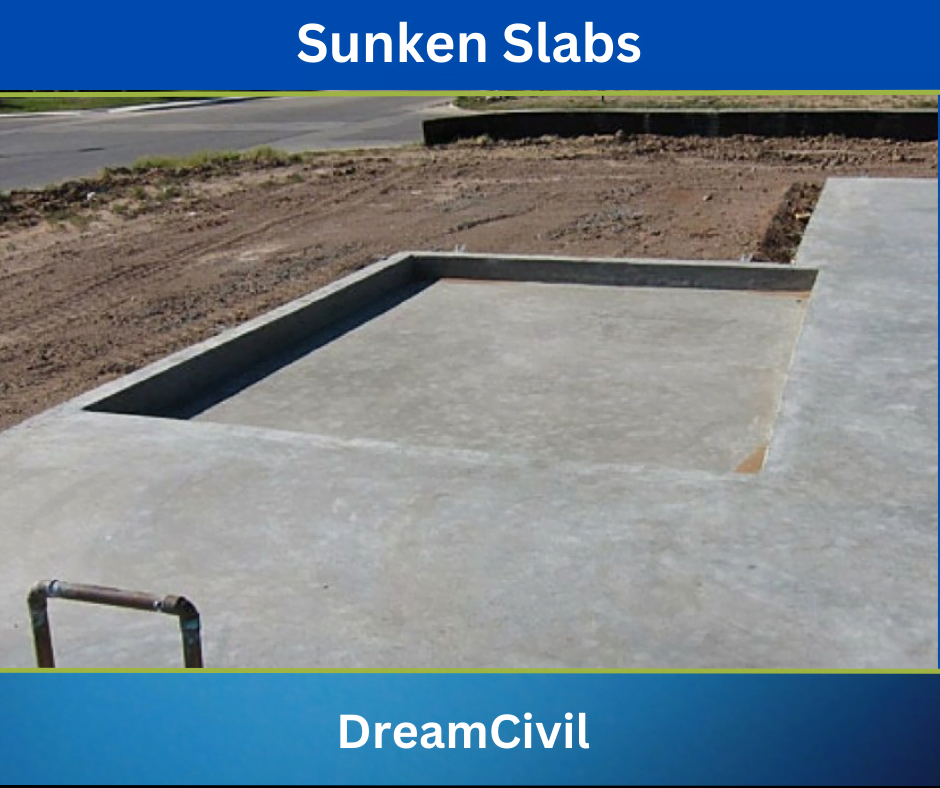Table of Contents
Sunken slabs are slabs that are cast at a certain depth (200 or 300 mm or any other depending on design) below normal floor level.
This surplus depth is utilized for laying pipes and utility ducts. Sunken slabs are utilized in toilets, bathrooms, and washing places. The feature of having a sunken slab is to conceal all the pipes under the floor.
The space between the normal slab and sunken slab is filled with materials like CLC blocks, coal lumps, burnt tar lumps, etc to protect the pipelines and also for easy repair and maintenance in the future.
There is a high chance of leakage and dampness in the sunken slabs, so care must be taken while installing pipelines and filling materials.
1. Materials Used For Filling Sunken Slabs
Some materials that are used for filling sunken slabs are:
a. Brick Jelly
b. Broken Fly Ash Bricks
c. Cellular Light Weight Blocks ( CLC Blocks)
d. Coal Lumps
e. Burnt Tar Lumps
f. Broken Red Clay Bricks

2. Uses of Sunken Slabs
Some uses of sunken slabs are:
a. It is used in the washrooms, bathrooms, etc.
b. Other areas where sanitary pipes are needed.
c. Mid-landing in a staircase where the end beam is designed as an inverted beam to have enough headroom below the landing.
3. Construction of Sunk Slabs
Steps in the construction of the sunken slabs are:
a. Placement of formwork should be done and reinforcements are installed as per the design.
b. Then concrete is poured and compacted using vibrators. After setting, curing is done for a minimum of 7 days.
c. Apply the mixture of cement and waterproofing material over the surface. Bitumen is also used for waterproofing if available.
d. Carry out the plumbing and sanitary piping work over the surface. Then fill the gap with filling materials.
e. Thin layer of concreting is done from the top and tiling work is carried out over it. In some cases, concreting may not be required.
4. Advantages of Sunk Slabs
Sunk slabs have the following advantages noted below:
a. In this type of slab, all plumbing pipes are concealed inward of the slab.
b. Special plumbing fixtures in sunken slabs are not needed to decrease noise in the bathroom.
c. These slabs give the best plumbing system and also can be utilized when the safety system is to be fitted.
d. It is easy to repair.
e. It provides desired decoration in the space.
5. Disadvantages of Sunken Slabs
Some disadvantages of sunken slabs are as follows:
a. The height reduces from slab to slab.
b. Experienced or skilled labor is needed to forge this type of slab.
c. Due to waterproofing and brickbat construction, it takes a long time for construction.
Read Also: One Way Slab & Two Way Slab

